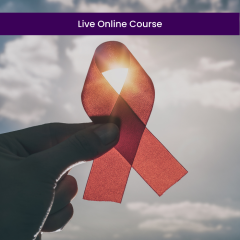Adolescence, Sexuality, and Cancer (1 CE)
Number of Credits: 1
This course is for: Clinical Psychologist, Counselors, LMFTs, and Nurses
Course By: Tracey Thomas, PsyD
Content By: Moules, N. J., Estefan, A., Laing, C. M., Schulte, F., Guilcher, G. M. T., Field, J.C., Strother, D. (2017). “A tribe apart”: Sexuality and cancer in adolescence. Journal of Pediatric Oncology Nursing, (34)4. 295-308. https://doi.org/10.1177/1043454217697669
Course Description: In the present study, researchers utilized hermeneutic phenomenology and narrative inquiry to explore sexuality from the perspectives of adolescent cancer survivors. Researchers sought to understand how a person’s sexuality is impacted by cancer during adolescence. The researchers found a connection between sexuality, self, and identity. Sociality was not as important as cancer, although it changes how individuals see themselves, sexuality, and fertility as a relational experience. The study's benefit aids skilled professionals working with adolescents who have cancer in talking about their sexuality.
Learning Objectives:
- Identify three aims of the study related to adolescent sexuality
- List six interpretations of the data as it relates to future research
- Identify three participants’ responses regarding sexuality
Course Outline:
- Read and understand the article, “A tribe apart”: Sexuality and cancer in adolescence
- Review the Course Description and Learning Objectives
- Work through the post-test questions; the answers to the questions should be derived from the respective article
- Review the article for further clarification, if needed.
- Return to the article for clarification regarding adolescent cancer survivors and sexuality, or for any missed questions
Implicit biases incorporate an association that occurs outside of conscious awareness that may resultantly lead to a negative patient evaluation derived from irrelevant characteristics; i.e. gender and/or race. A systematic review of the literature was conducted. Thirty-five studies identified the existence of implicit bias in healthcare professionals; all correlational studies evidenced a significant positive relationship between implicit bias levels and lower quality of care (FitzGerald & Hurst, 2017). Continued research in health care settings, combined with greater method homogeneity, should be employed to examine the occurrence and prevalence of implicit biases in healthcare settings as a strategic approach for mitigating related disparities (FitzGerald & Hurst, 2017).
Reference:
FitzGerald, C., Hurst, S. (2017). Implicit bias in healthcare professionals: a systematic review. BMC Med Ethics 18, 19. https://doi.org/10.1186/s12910-017-0179-8
Approvals:
| Board Approvals | American Psychological Association (APA), NBCC, Florida Board - Social Work, MFT, Counseling, and Psychology, NYSED - Social Work, MFT and Counseling Only, American Academy of Health Care Providers in the Addictive Disorders |
|---|---|
| CE Format | Online, Text-Based |







